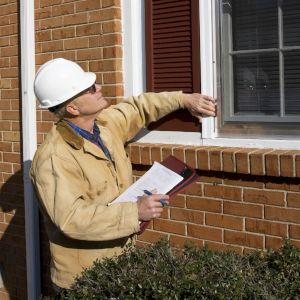Do I Need To Conduct A Building And Pest Inspection Before Auction?
It may seem like overkill to conduct a building and pest inspection on a property that you are yet to make an offer on, but it should be seen as non-negotiable.

Buying property is generally the biggest financial decision a person will make in their lifetime. For that reason, it is essential to be sure the property really is what it appears to be. A building and pest inspection will provide you with an inspection report detailing the condition of the property – including things you can’t see. The report covers everything from minor cosmetic damage to major structural faults.
A building and pest inspection report is a valuable tool for property investors, as it can almost always be used to negotiate purchase prices down or alter the contract or settlement terms. No property is perfect, and even minor defects can give you significant leverage when bargaining.
When should I conduct a building and pest inspection?
Wherever possible, an independent building and pest inspection should be conducted prior to entering a contract. However, in some instances this might not be possible. If the property is in high demand, for example, and the vendor is looking for a fast sale, timing may restrict your opportunity to conduct an inspection. When this is the case, it is essential to protect yourself by having the building and pest inspection listed as a condition of the contract (“subject to building and pest inspection”). A solicitor can check the wording of the clause to ensure you are covered.
If the property is going to auction, it is essential to get a building and pest inspection report prior to auction day, as buyers who are successful under the hammer are making a non-negotiable commitment to purchase the property – there is no cooling off period. If you neglect to conduct an inspection before auction, you could find yourself in a difficult position, as the property faults could be substantial, and there’s no option post-auction to negotiate the price down.
A property vendor is under no legal obligation to disclose building faults. That means that if you do not conduct an independent building and pest inspection prior to success at auction, you are automatically accepting any undisclosed building faults.
Determining what is material and non-material in the inspection report
A building and inspection report will inform the prospective buyer of all things great and small that are wrong with the property. It is the responsibility of the prospective buyer to determine what they see as a ‘deal breaker’ and what could be an ‘easy fix’.
Property buyers should also be clear on the difference between ‘material’ and ‘non-material’ issues within the building and pest inspection reports.
Material
Material faults in a building and pest inspection report are the ones that are cause for concern. It is important to note, however, that material faults are not necessarily deal breakers. They can work in your favour to enable you to negotiate the price down. Some examples of material faults are:
• Termites
• Structural faults
• Electrical faults
• Rising damp
• Major water penetration
Non-material
Non-material faults in a building and pest inspection report are faults that are easily reparable, including:
• Broken tiles
• Leaky taps
• Loose doorknobs
• Hairline cracks
• Jarred windows
How to use a building and pest inspection report to negotiate purchase price
The more you know about the property, the more leverage you have to negotiate the price down. A building and pest inspection report is a very powerful tool when it comes to bargaining. Even if the report lists only minor imperfections, it is still enough to bargain down the price by at least a few thousand dollars, which quickly justifies the few hundred dollars spent on the independent inspection report.
Chances are, though, there will be something significant on the report that you will be glad to have found out prior to purchase.
In the case of severe damage, such as termites or water damage, you will have significant negotiation power. For some buyers, large material defects can be deal breakers. For property investors who have pre-existing plans to renovate – to some extent – after purchase anyway, a building and pest inspection report that could be deemed ‘bad’ can actually be a positive result. If the prospective buyer has plans to knock down or renovate one part of the house, a defect in that area could be a blessing in disguise.
How to select a building and pest inspector
Often vendors provide prospective buyers with a building and pest inspection report that they have had conducted on the property themselves. While it can be tempting to save some cash and accept a pre-existing inspection report, it should be non-negotiable to get your own independent inspection for each property you plan to make an offer on.
Independent inspections are conducted by an impartial party, which means full disclosure and no bias on reports. Spending a couple of hundred dollars on an independent inspection gives you peace of mind that all parts of the property have been inspected, and could potentially save you thousands of dollars in unexpected repairs further down the line.
Do your due diligence when selecting a property inspector. A surveyor, licensed builder or architect will have an appropriate qualification to conduct a building inspection.
A building inspection report must comply with the Australian Standard (AS 4349.1).
It is a good idea to follow up with the inspector after the inspection has taken place, as they can talk you through the inspection in layman’s terms before producing a typically very technical report.